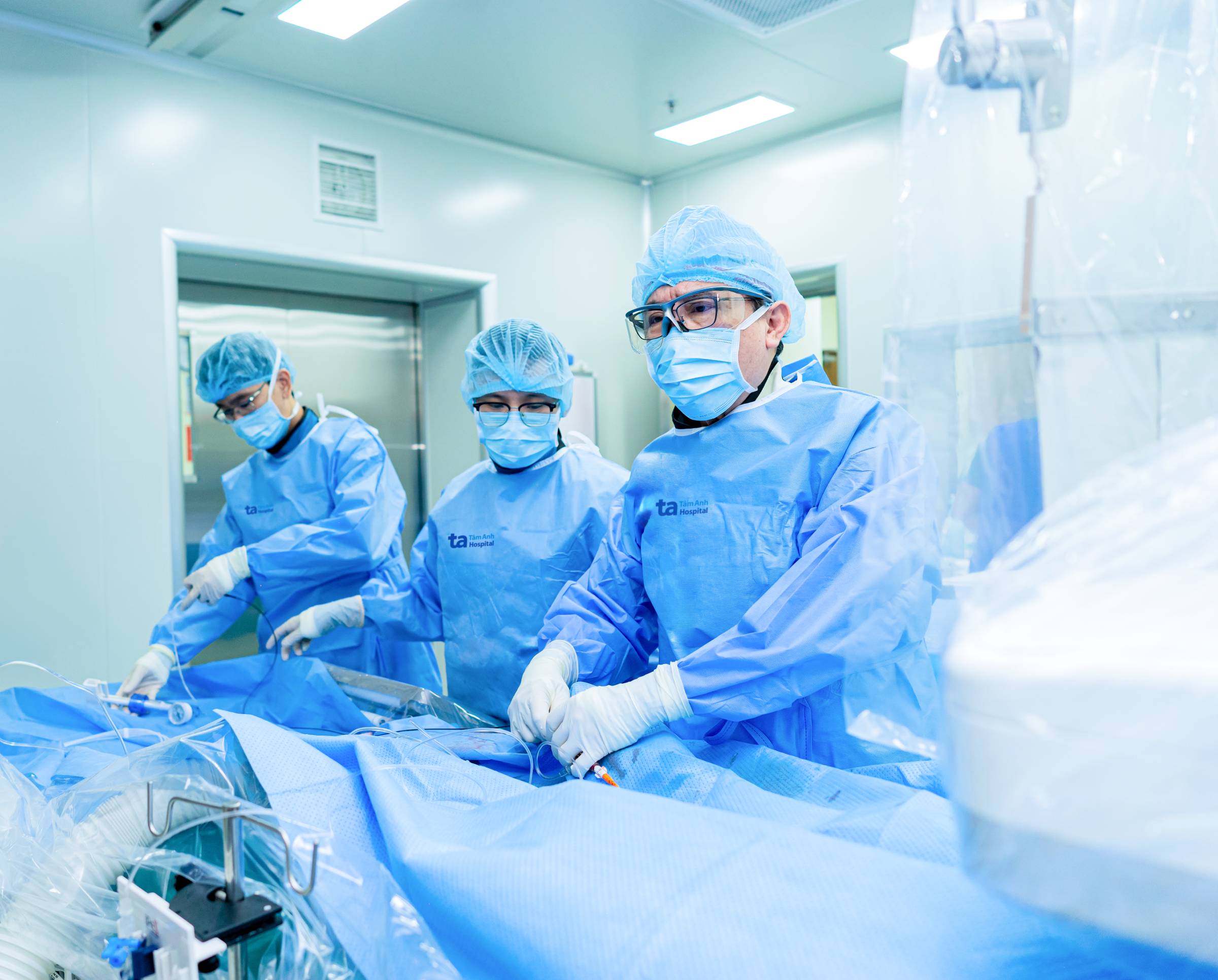Test results at Tam Anh General Hospital in Ho Chi Minh City revealed elevated cardiac enzymes and abnormalities in An's heart muscle. According to Dr. Phan Tuan Trong from the Emergency Department, all three of the patient's coronary arteries were severely narrowed. The left anterior descending artery was 80-90% blocked, the left main coronary artery was 99% blocked, and the right coronary artery had long, diffuse 80-90% blockage. This triple-vessel coronary artery disease posed a high risk of heart attack.
Dr. Trong explained that smokers have a 2 to 4 times higher risk of heart attack than non-smokers. Toxins in cigarettes, such as nicotine and carbon monoxide, damage the inner lining of blood vessels, promoting plaque buildup that narrows the arteries. Nicotine also increases blood pressure and heart rate, raising the risk of blood clots that can block coronary arteries. A heart attack occurs suddenly when blood flow to the heart is obstructed.
 |
The medical team performs a stent placement procedure. Illustrative photo: *Tam Anh General Hospital* |
Dr. Pham Hoang Trong Hieu, from the Interventional Cardiology Center, and his team successfully placed a new-generation drug-eluting stent using optical coherence tomography (OCT). They also maximally expanded the stent against the artery wall without dissecting the blood vessel and addressed residual narrowing at both ends of the stent to reduce long-term risks. This crucial step helps prevent blood clots within the stent and limits restenosis (re-narrowing of the artery)—two of the most dangerous complications after intervention.
An's vital signs were monitored every 8 hours, and he was put on a low-salt, low-fat diet. After the procedure, his chest pain subsided, his appetite improved, and he was discharged with medication. He needs regular cholesterol checkups, lifestyle changes, and must quit smoking to prevent restenosis after stent placement.
Dr. Hieu advises anyone experiencing symptoms like intermittent chest pain, shortness of breath, sweating, nausea, or dizziness to seek immediate medical attention at the nearest facility with an interventional cardiology department. If coronary artery revascularization is performed within the first 90 minutes of symptom onset, the survival rate and chances of cardiac function recovery are highest. After 12 hours, treatment effectiveness decreases, and heart muscle damage becomes harder to reverse.
Smoking increases the risk of angina, heart attack, arrhythmia, aortic aneurysm, myocarditis, and peripheral artery disease. According to the World Health Organization (WHO), tobacco causes approximately 8 million deaths globally each year. In Vietnam, it's estimated that over 16 million people smoke, leading to more than 100,000 deaths annually from tobacco-related illnesses.
Nhat Thanh
*The patient's name has been changed.
| Readers can submit questions about cardiovascular diseases here for doctors to answer. |












